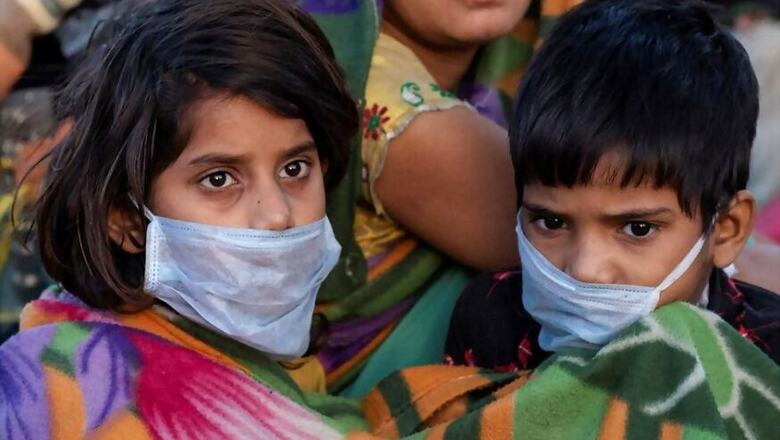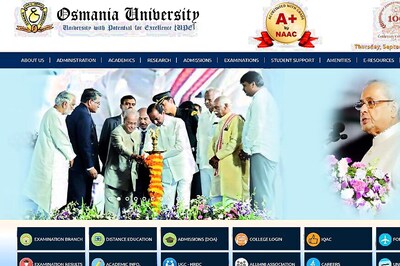
views
The poor, the labourers, the villagers and various kinds of subalterns usually don’t carry pandemics. Those who are economically better and acquire the capacity to be mobile, the affluent or those who aspire to become richer, frequent flyers, foreign-attracted socialites, a few bureaucrats and the so-called global public appear as the first carrier of epidemics.
The first category, disparagingly referred to as ‘dirty log’ (dirty people), come far later in the chain of spread of pandemics. It’s the aspirant middle-class who has captured a large share of benefits from neo-liberal economy that receives and disseminates epidemics.
So in this context, the first carriers of pandemics are not in most cases the poor, slum dwellers and villagers who are considered the ‘other’ by urban centric cultural elites and the mobile middle class. These poor labourer and lower class people don’t have gated apartments. They reside in slums, pathways, sleep on footpaths, they appear as an ‘over-visible social body’ in one sense or another. That is why they get the blame as carriers of epidemics and pollution.
If one studies the history of pandemics, it reveals that in most of the cases explorations, conquest, commerce and migration prepared the network for spread of the disease in different parts of the world.
To follow these networks, the explorers who went to various parts of the world for trade or colonial settlement, as army troops or travelers, became the cause and appeared as carriers of the most disastrous epidemics. The aggressive growth of colonialism and capitalism in one sense played a productive role in outbreaks of epidemics in human society.
These communities emerge from the class of people who acquired the capacity and condition to become mobile, exposed to the other world and came in the chain of epidemics. They are mostly economically well-off or relatively economically better section of our society. The compelled displacement of large section of people due to the expansion of colonialism after 17th century in various parts of world and also due to the aggressive growth of mercantilism and capitalism produced a favourable condition for the outbreak and dissemination of pandemics all over the world.
In second century BC, ‘Antonine plague’ which circulated in Rome came with the army troops who returned from middle-east after a war. The ‘Justinan plague’ also reached to Constantinople around 541 AD with grain ships from China that travelled via Africa and Egypt .It spread through the crew, merchants, ship managers, soldiers and workers.
Some historians believe that the 1871 Plague which was recognized as ‘Indian Plague’ all over the world in fact did not originate in Bengal, but was brought there by Irish army personnel and was spread to various parts of Bengal and India by the troops and traders.
So migration in various forms and in various stages of history brought money, culture and diseases together. The small pox, plague, yellow fever, cholera, Russian flu, Asian flu, Swine flu, Syphilis, HIV aids in most cases spread in different parts of the world with various kinds of migrants and mobile traders, missionaries, ship crew, army troops and rich planters. The locally settled, immobile or less mobile people appear as ‘passive innocent recipient’ of these pandemics and became ‘compelled carriers’ of these diseases.
After a better understanding this phenomenon, colonial powers who took a huge population as plantation labourers during 18th and 19th centuries to Mauritius, Fiji, Guyana, developed a system of complete health check-up of migrants before loading them on ships for various destinations.
The main worry of the colonial administration was that these migrants should not work as carriers of any epidemic infections. They colonized their bodies and made regulations for how migrant’s bodies behave in plantations. However, they couldn’t fully regulate their army officers, missionaries, doctors, planters, colonial managers so rigorously. So many a time they worked as carrier of diseases.
A similar phenomenon has been seen in the case of coronavirus as the affluent, frequent flyers, business entrepreneurs, travelers, those who study or work abroad, sportsmen and celebrities have emerged as the first carrier of coronavirus.
It is true that it is also circulated in India through skilled or semi-skilled lower middle class or middle-class migrants working in the middle-east, but even in those countries, the virus was brought by the rich and affluent.
The Indian workers in the gulf nations may have appeared again as innocent recipient of this epidemic. In India this virus is again received by poor taxi drivers, shopkeepers, restaurant workers, internal migrant labourer’s working in the cities like Mumbai and Delhi and other sections of our society.
So, the coronavirus proves again that dollar and diseases may travel together from destination to home land and vice versa. It does not mean that we can stop flow of population from one part of world to another part but we should always take a lesson from history of pandemics and keep ourselves self-alert. Otherwise every future epidemic may repeat itself as disastrous human tragedy.
(The author is professor and director of GB Pant Social Science Institute, Prayagraj. Views are personal)


















Comments
0 comment